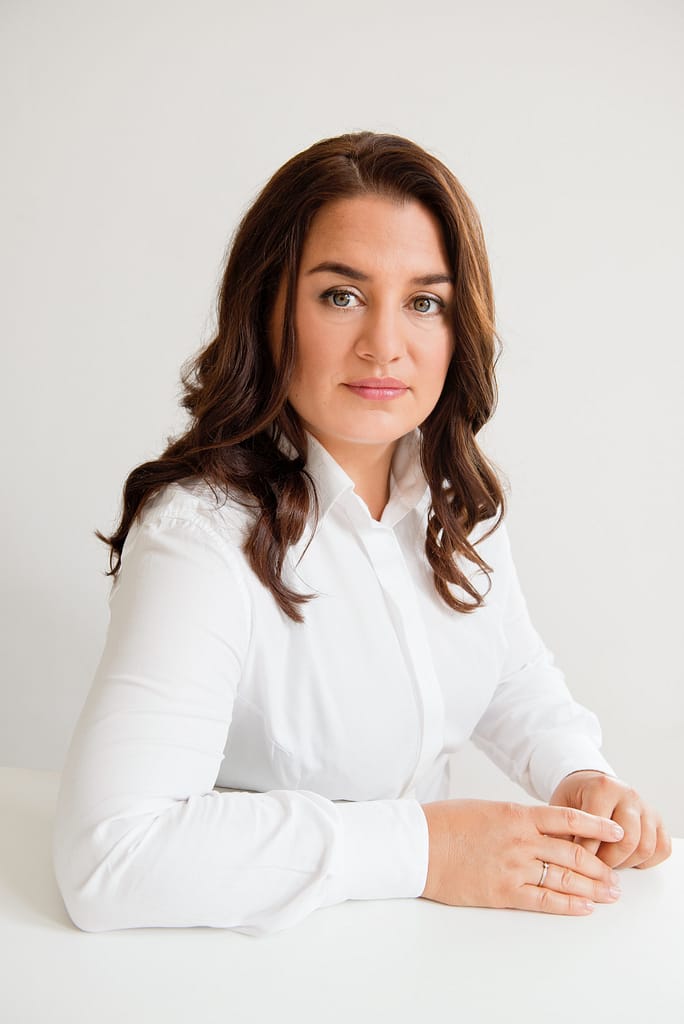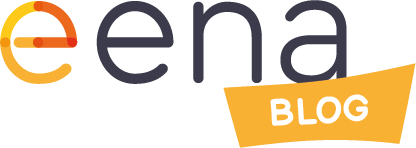EENA meets Rut Erdelyi to talk about resilience
First things first: meet Rut
Rut Erdelyi is the European Director of the Resilience Advisors Network involved in policy and programme design at the national and international levels.
She was a senior team member elaborating the Evaluation Study of Definitions, Gaps and Costs of Response Capacities for the Union Civil Protection Mechanism for DG ECHO of the European Commission. She was also the Reviewer of the certification process of the European emergency response capacities in the context of the Union Civil Protection Mechanism, which contributed to the baseline for the development of complex multi-annual EU programs including rescEU.
Rut brings extensive experience supporting capacity and capability building projects across sectors and governance lines, supporting institutions engaged in the disaster management cycle, and supporting a diverse range of projects and programs across Europe. She is the Horizon 2020 DRS 01 Cluster Coordinator at CMINE and work package leader for the Horizon 2020 project RESILOC.

In a world increasingly susceptible to threats that put our security and safety at risk, what is it like to work in an area that addresses society’s most pressing challenges?
“The question of WHO AM I IN THE STORM is at the core of my innermost engagement with the world of risk, loss, and recovery. Embracing my inborn existential anxiety, I made a conscious choice to live in self-determination instead of self-defence. I decided to re-focus from what I do not want to experience to what I desire to see more of in the world. This shift of attitude and perspective reframed my perception of possibilities and set me free to express my innermost desires for an active response to what happens around me. Fear became a friend, the world a playground where all obstacles matter in prep for what is to come and the future an opportunity for exciting, inspiring cooperation in co-design of shared and co-shaped existence.“
Different policies are already in place to cover how societies can manage emerging threats. For you, what is the most important step in Disaster Risk Reduction (DRR)?
“The current global crises teach us to anticipate and adapt, empower local communities, and systematically strengthen networks to address emerging threats and build truly resilient societies. Conscious interactions open doorways for innovative approaches and technology deployment, boosting the adoption of key solutions and policy buy-in, generally limited by mass awareness. Moreover, the instant availability of information stimulates constant adaptation, generating a need to create a realm beyond data flow and enables actors to connect, joining forces to address complex challenges from multidimensional perspectives.
The impacts of the pandemic and other changes are accelerating an organisational shift from traditional hierarchical structures to more flexible, networks-based, and co-creation-enabling management perspectives to facilitate a living system ethos in addressing complex, multidimensional challenges together. At the Resilience Advisors Network, we contribute to this open space for connected networks and collaboration through the Crisis Management Innovation Network Europe Crises Management Network CMINE.
As we jointly embrace the paradigm shift from managing disasters to managing risks, a space opens for each of us to contribute to disaster risk reduction in our unique way. The Knowledge Network of the EU Civil Protection Mechanism, developed alongside the RescEU programme, is a prime example of an initiative taking action by opening a platform for all actors involved in civil protection, equipping all engaged in increasing safety of communities with knowledge and support across borders and agendas.
Using the vast global experience, utilising available data within the existing while actively building future digital ecosystems, applying these together with current awareness as decision-making tools should guide us to anticipate and respond in a timely, effective manner while further developing our preparedness and ability to co-create the future.
Integrating disaster risk reduction and climate change adaptation to minimise loss and damage, reduce vulnerability and enhance resilience jointly is a worthy goal to address together. Building personal resilience alongside that of communities, creating opportunities for growth of windows of tolerance in crisis-affected communities and increasing the zones of self-regulation activating social capital of communities and leaving projected doomsday perspectives in exchange for rational hope in action will essentially keep us moving towards equilibrium.
When we choose to connect, we enable ourselves and others to find common ground and act, energising each other with knowledge and shared concerns, creating dialogue in networks of nourished social connections, essentially bridging intentions and prioritising actions for systemic change. Joining forces is what we need most, I believe.”
Risks change with great frequency and COVID-19 has proven this theory more than ever. What innovative ideas can be utilised to rebuild communities after the pandemic?
“Lived crises essentially change our baseline perceptions and aspirations by redirecting our attention to what is essential and uncovering what is at the basis of our existence. The COVID-19 pandemic changes operational requirements and further exposes vulnerabilities of complex societal systems and deep social inequalities. It places additional pressure on already strained health care systems, the service delivery in key governance segments, including mobility, digital access, and education; the true resilience of communities and whole populations. It refocused attention from global to local, enforced new working practices, and highlighted the critical roles of local actors, thus creating an opportunity to transition to a more pro-active, locally-led, innovation-based response. This, I believe, requires adequate capacity-strengthening approaches, especially in support of the transition towards the advancement of locally lead initiatives and long-term, system-wide change in favour of tailored, more inclusive, and open models of governance.
As an illustration of an added value initiative, I would like to spotlight the example of the community in Gorizia, Italy, which established a Local Resilience Team in the context of the EU Horizon 2020 supported project RESILOC. It engages citizens, empowering all through real-time data and engagement in participatory strategic planning tools and creating social space for resilience-focused interaction and integration of innovations and guidance generated by science. The local resilience team, working with the extensive support of the local municipality and engaged institutional partners, including social scientists from the Institute of International Sociology of Gorizia ISIG of the RESILOC project consortium, significantly contributes to building on a deep understanding of vulnerabilities and threats. Activating the community’s social capital to raise awareness, support risk-focused needs-based decisions and actions, and systematically strengthen the entire community’s prevention-focused culture. Innovations essentially serve a cause when they deepen our understanding and are deployed to support agility and systematically empower a community looking forwards while standing in its power, facing hazards and threats as opportunities.
Constructive pandemic recovery principles will eventually need to be systematically paired with resources to enable sustainable recovery. The Recovery Plan for Europe will be the largest stimulus package ever financed on the continent, with a total of €806.9 billion invested in helping rebuild a post-COVID-19 Europe. We are all hoping it will be a greener, citizen-friendly, and truly resilient Europe.”
Why do you think that some societies successfully adjust and even thrive amid adversity while others fail to do so?
“It’s how we overcome adversity and envision a safer future that makes all the difference. Starting by doing what is necessary, then doing what is possible, suddenly going beyond what we thought possible to discover new knowledge, deeper connections, and new baselines for eventually growing more resilient together.
The Sendai Framework for Disaster Risk Reduction 2015-2030 calls for investment in disaster risk reduction for resilience, listing necessities for achieving better resilience covering nearly all aspects of everyday life. Our ability to learn from threats and challenges, take action to prepare for and withstand adversity collectively and as individuals and eventually adapt to new realities is what determines our ability to survive and thrive.
National risk management strategies with an all hazards, all threats approach, focused on saving lives, protecting livelihoods while strengthening social cohesion, recovery and resilience ideally serve to guide what needs to be done. Effective policies address vulnerabilities and create the frame enabling society to anticipate systematic and direct activity. It also encourages active citizenship and new ways of working together with the support of effective legislative structures guiding actions, eliminating barriers for cooperation and investment where it’s most constructive, and encouraging resilience-focused thinking along community and governance decision-making lines. Community-led, resilience-based partnerships are essential for their actual implementation and impact.
Policies supporting engagement across the disaster management cycle, coping, adaptation, and social cohesion, complemented with schemes providing resources for targeted actions, significantly raise the ability of whole societies to face and overcome adversity. Investing into enhancing resilience, the ability to prepare and plan for, absorb, recover from and adapt to impacts of adverse events increases the collective power to overcome adversity and transform it into an opportunity to enable healthy, safe living to as many as possible.
Eventually, the partnerships and “all of society” engagement through networks alongside effective and efficient response help reduce the scale and impact of shocks, build capacity to withstand, and help ourselves to come out of crises stronger and better.“
During an emergency, citizens and their behaviour play a big role. What are the best practices for citizens to adopt in such a situation?
“Emergencies are an inherent part of our existential experience. Remaining calm and rational during life-threatening situations can save your life. In most emergencies, you do not need special skills to survive; you need to know what to do. Passivity, mental paralyses or the urge to carry on as usual in the face of crises are your enemies, as it’s the ability to adapt to a sudden change in the environment that can save your life. What comes easy in a normal situation requires a lot more conscious effort in a stressful situation amid a hurricane, on a sinking ship, or in a burning building as the events evolve faster than we can process them. The high emotional arousal can limit the number of alternatives we consider to take action and escape safely. Typically, the better prepared to survive.
Asking the simple question, “If something happens, what will be my first response?” is a great way to start. Staying connected and informed is key. Making plans in advance can save you and the lives of your loved ones. Knowing how to contact emergency services, noting exit routes, paying attention to safety briefings is key. Maintaining several ways for receiving alerts, having a shelter plan for various emergency scenarios, planning evacuation routes, having a family communication plan with alternatives, preparing an emergency kit, and Family Emergency Plan based on family/household members’ specific needs is helpful.
Learning more about possible threats and ways to protect oneself effectively improves our chances of staying calm and making smart decisions in crises. Eventually, research shows that acting in solidarity with others involved significantly strengthens the collective resilience of all of us as we are stronger together.“
In each decade, new concepts are developed considering the advances of science and the expansion of the literature on the topic. For you, what does the future of “societal resilience” look like?
“A pragmatic shift from preparing for the ultimate doomsday to co-creating a new, better world build on kinder, more sustainable, and universal principles is what drives my hopes for a better future for all of us to work jointly towards.
Sustainable mechanisms of community engagement, with resilience at the core of the joint focus, serve as the vehicle for progress. A society constantly seeking positive baselines for addressing existential concerns exposed by emergencies and crises will ultimately work for the greatest good of all its members.
Using experience and science to support risk-focused decisions and smart investments into our safety and security ecosystems and proper governance of the planet and its resources empowers those who choose to look forwards without fear to making the world a safer place for all.
Upholding open dialogue, enabling local innovation and experimentation in the development of new solutions and empowering all to join actions keeps the door open to a more liveable future.”
EENA is one of the partners of the H2020 ENGAGE project that is part of a cluster of other European projects on social resilience that you are also part of. Do you think it is essential in this area to create synergies between different initiatives and projects?
“The European research and innovation supporting programs Horizon 2020 and Horizon Europe connect diverse actors engaged in strengthening the impact of research and innovation in developing, supporting, and implementing EU policies while tackling specific global challenges. Their active communication and collaboration through platforms such as the Community of Users for Safe, Secure and Resilient Societies CERIS and clusters lead to a deeper exploration of challenges and broader uptake of generated solutions, strengthened synergies, and magnified benefits of research in strategic societal challenges.
The DRS01 Cluster of the HORIZON 2020 links projects RESILOC, ENGAGE, BUILDERS, LINKS, RiskPACC and CORE hosted on the CMINE platform and endorsed by the European Research Executive Agency (REA) was launched to enable the project teams to cooperate more closely with other resilience-focused projects, engage in an open dialogue about joint cooperation, creating a baseline for closer interaction, buildup on synergies and generation of added value collaboration. Furthermore, community platforms, ideally built for every programme, simplify communication exchange, mandate cooperation, and calibrate joint efforts.
The closer cooperation provides a superb window to co-create, participate in, and observe discussions on innovation and thereby establish an unprecedented sharing of knowledge across resilience-related fields. With the support of platforms such as CMINE, stakeholders, networks and initiatives are linked to providing a platform for focused discourse and cooperation on specific deliverables. This reduces repetition and fragmentation while encouraging new ideas and identifying innovative solutions to improve European resilience, not just for the benefit of professionals involved in initiatives across segments, projects, and individual actions and eventually all of us.”
Finally, having been involved in numerous projects on this topic, what was the project/achievement that most marked your career?
“It was engagement with the EENA Tech & Ops Committee and its working groups providing expertise on operational and technical issues related to emergency services that opened my eyes to the immense added value of international cooperation and exchange across borders, silos, and agendas. The Committee facilitates knowledge-sharing via the production of added-value documents, some of which I had the honour of facilitating, including the 112 Accessibility for People with Disabilities and Psychological support of 112 call takers. The existential experience of the dialogue and sincere search for principles of joint action that create a more supportive environment for those facing an emergency and first-responders serving them in the crises has redirected my career path.
Drawn by the energy of challenges that shake the world awake, I chose to set my life’s intention towards connecting & empowering myself and others to contribute our unique personal gifts in contribution to the highest good of all. That is my baseline, from which I draw the inner motivation and choice of direction in challenges and opportunities. When it’s real, it’s about us, and no matter how difficult, there is always hope as long as we do not give up and keep going, learning from our authentic journeys uniquely interconnected with all others. Stay safe and live every day to its fullest, placing yourself in the arena of life with confidence and determination as we co-create a world that shall be a better, safer, and more harmonious place for all.”
Author: Marta Azevedo Silva, Former Communications and Press Manager at EENA
The opinions expressed are those of the author and do not necessarily represent the views of EENA. Articles do not represent an endorsement by EENA of any organisation.

EENA
- EENA#molongui-disabled-link
- EENA#molongui-disabled-link
- EENA#molongui-disabled-link
- EENA#molongui-disabled-link
Share this blog post on:
